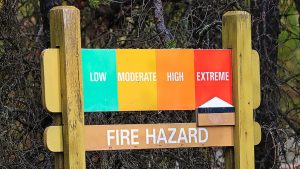Green roofing has become synonymous with planting rooftop gardens, but some proponents of environment-friendly roofing materials see it differently, proposing the use of such natural materials as flax, hemp and water reeds.
TORONTO
Green roofing has become synonymous with planting rooftop gardens, but some proponents of environment-friendly roofing materials see it differently, proposing the use of such natural materials as flax, hemp and water reeds.
Traditional thatch roofing involves using reeds and grasses to create a dense layer of water repellant material. Jef Achenbach runs the Annapolis Thatching Co-op, a Nova Scotia company working to establish a market for thatched roofing in Canada.
“I and a few others met with a certain amount of success for years thatching small structures with reed we hand-harvested here and in the U.S.,” says Achenbach.
Though Canadian rye straw is acceptable, he prefers to use a water reed known as “phrag” — Phragmites australis — a non-native species that has been choking marshes along North America’s east coast.
Reed roofing can be expected to last more than 50 years, he says.
Though residential housing seems to be the biggest market for thatching, Achenbach notes that commercial developments are also becoming customers.
“My next job is to expand a reed roof on an ice cream retail store I did two years ago in Dartmouth.”
Achenbach is also perfecting a phrag harvester which allows him to cut up to 500 bundles per day.
“All I need now is a reliable source of standing reed in Ontario to be able to supply the future Canadian market,” he says.
Another natural approach to roofing is the use of plant fibres as a component in more traditional materials. Chatham-based Enviroshake produces a variegated roofing shake that replicates the look of cedar.
“We use natural fibres in conjunction with crumb rubber and post-industrial plastics,” says Brian Eberle, Vice-President, Marketing and Sales with Enviroshake.
“Forty per cent of the product is made from natural fibre, though it could be flax or wood flour — it doesn’t really make a big difference in the final product. It depends on the cost and availability of the fibre.
“We could also use hemp fibre, but it’s difficult to get at the right price and it’s tough on the grinding equipment.”
The product is fully guaranteed for 50 years.
“Flax grows almost anywhere in Canada, except where it’s too hot, so there’s a ready supply,” says Alvin Ulrich, President of Saskatoon-based Biolin Research and a fibre specialist with the Saskatchewan Flax Development Commission.
Farmers grow flax primarily for seed, but usually have little use for the remaining “straw.” Ulrich says that tough flax fibre could easily replace the glass component in asphalt shingles.
“Flax is lighter, so the shingles would have a much lighter weight,” says Ulrich.
“And after the shingles are torn off, the flax fibre would eventually rot away, unlike glass.”
Ulrich says that flax can be grown to order, to create fibre ingredients suitable for a number of roofing materials, including plastic composites.
“There are ways to coax flax to suit manufacturing needs,” he says. “It’s extremely versatile.”










Recent Comments
comments for this post are closed